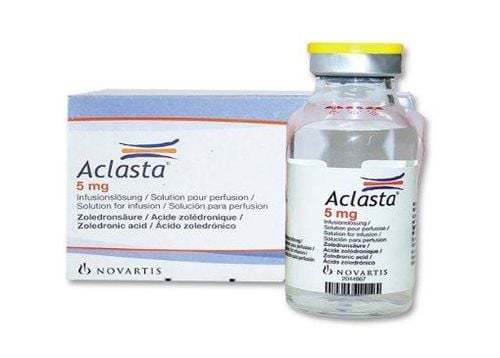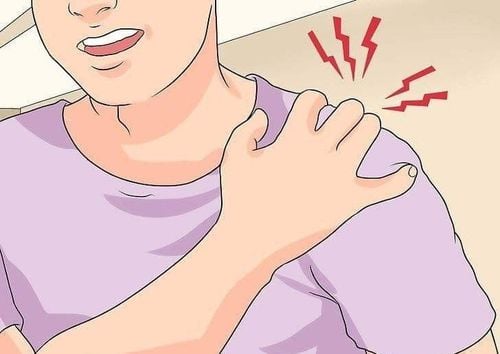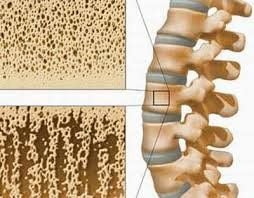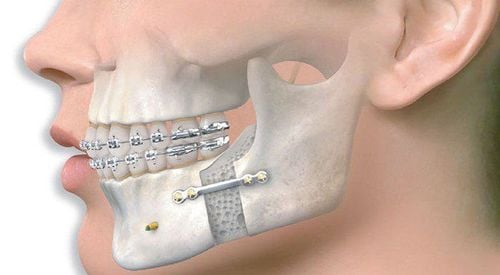This is an automatically translated article.
The article was professionally consulted with Master, Doctor Truong Thanh Tam - Pediatrician - Department of Pediatrics - Neonatology - Vinmec Danang International General Hospital.The collarbone (or collarbone) is the long, slightly curved bone that connects the shoulder to the chest. The collarbone supports the shoulders during body movements. A broken collarbone can take 6 weeks or longer to heal. Your child will need to wear an arm sling to keep the broken bone from moving during the injury.
Therefore, follow-up care for a child's collarbone injury is an important part of your child's treatment and safety. Even more important, caregivers need to be aware of the early warning signs of a clavicle fracture. In this article, we will provide useful information to help caregivers promptly recognize the symptoms of clavicle fracture in children so that they can take timely measures.
1. How does clavicle fracture affect children?
Children are often very active and prone to falls and bumps during activities and play, so accidents that lead to broken bones can happen at any time. The collarbone is the most commonly broken bone in young children. Infants and children are more susceptible to fractures of the collarbone because the bone does not fully harden until adulthood. The collarbone is the long bone in the shoulder that connects the shoulder blades to the rib cage. The length of the bone makes it easier for the bone to break near the middle, but some fractures occur when the bone attaches to the rib cage or fibula. Collar fractures can occur when a child falls on his shoulder or on his arm when he falls. It is not uncommon for an infant to have a clavicle fracture during difficult or breech delivery.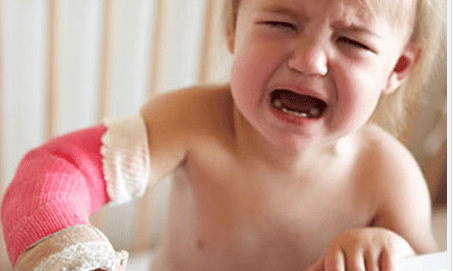
2. Causes of clavicle fracture
Toddlers often break a bone or break their collarbone when they fall in a forward arm position. Falls with direct impact on the head and shoulders are also at risk of breaking the collarbone. Nerves and blood vessels located below the collarbone can also be damaged if the collarbone is cracked or broken. Sometimes bones will make a crunching sound when broken, but parents often won't know their baby's collarbone is broken until some other symptoms appear.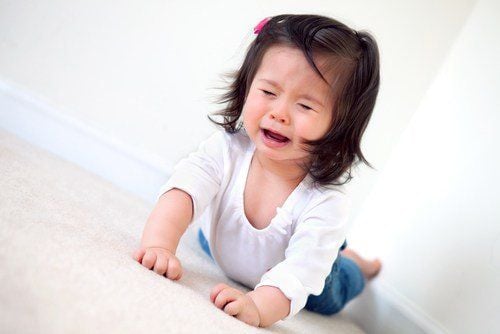
3. Symptoms of collarbone fracture
Because clavicle fractures are common in young children, even infants, sometimes children cannot tell those around them that they are in pain or broken, so observation is the best way. to know if the child has any health problems. If the child has a broken collarbone, the child's ability to hold the arm on the trunk will be impaired, as can be seen by the signs of sagging shoulders, the child will probably not want to move his or her arm on the broken side. because it makes the child's pain worse. Children can hold, force their arms towards themselves to stabilize and avoid other objects.The broken collarbone may be swollen, parents may notice bruises or bumps where the bone is broken. The suspected broken area can see deformed bones, raised under the skin, painful pressure and crunching sound, parents can also identify broken bones. Besides, children will feel uncomfortable when in pain, crying or screaming at people.
Within a week of a collarbone fracture, the fracture site will develop a lump called scar tissue where the bone is healing. Sometimes, this lump will become the only sign of a broken bone in an infant.

Pain in the collarbone or top of the shoulder, especially when moving the shoulder Difficulty moving the shoulder or arm Swelling or bruising Weakness, numbness, or tingling in the shoulder and arm Tumor or bulge in the broken area Deformed collarbone or unusual-looking collarbone Shoulder sag and forward Arm support hand for pain relief.
4. How to treat clavicle fracture?
Collar fractures in children often heal faster than adults, but children still need to be examined by a doctor to determine the status of the broken bone and have effective treatment measures.When a child has a broken collarbone and is taken to a medical facility, the doctor will examine it and make sure that no nerves or blood vessels are damaged when the bone is broken. The specialist will ask about your child's injury and symptoms. They will also examine your child's shoulders and may apply gentle pressure on the collarbone. In addition, the doctor will check feeling and strength in your child's arms, hands, and fingers. An X-ray or CT scan may show a fracture. Your child may be given contrast fluid to help the fracture show better in the images. Many broken collarbones just heal without surgery, sometimes just immobilizing the arm on the broken side to allow the bone to heal. The doctor will be able to advise the family to use a sling or a medical item such as a figure eight brace within three to four weeks if mild and moderate, if the bone condition is more severe than expected. surgery may be required, pulling the child's shoulder back and keeping everything in its proper place until the bone condition returns to normal.
The doctor may instruct parents on how to gently lift and place the baby, to avoid injuring the baby until the bone heals. If parents want to limit their child's discomfort, they can consult a doctor when using a pain reliever such as acetaminophen or use an ice pack lined with a soft towel for the first 48 hours. Each application is spaced 15-20 minutes for two to three hours to reduce swelling.
Most broken collarbones will heal on their own. It is very important to keep your child's arm still for the collarbone to heal. Your child may need the following medical interventions:
Acetaminophen relieves pain and fever. Your doctor will prescribe this pain reliever for your child, providing information about the dose, timing, and some of the side effects of acetaminophen.

5. What can be done to help manage a child's collarbone fracture?
Rest will help your child's collarbone heal faster. Limit children's activities as directed. Your child should get as much rest as possible and get plenty of sleep.Apply ice to the child's collarbone for 15 to 20 minutes every hour or as directed. Use an ice pack or put the shaved ice in a plastic bag. Cover the bag with a towel before applying it to the collarbone. Ice reduces swelling and pain.
Physical therapy may be recommended after your child's collarbone heals. A physical therapist teaches your child exercises to help improve movement and muscle strength, while reducing pain.
The collarbone is the part of the bone that toddlers most often break in the body. While collarbone fractures can be a sign of abuse against young children, they are generally the result of activities in a toddler's exploration of the world. Because young children cannot express their pain verbally, it is also important for parents to be aware of the symptoms of a collarbone fracture so that they can recognize this condition as early as possible so that further deformities can be prevented. unworthy of children.
When a child shows abnormal signs of health, parents can take the child to Vinmec Health system for timely examination and treatment.
As a key area of Vinmec Health System, Pediatrics Department - Vinmec International General Hospital always brings satisfaction to customers and is highly appreciated by industry experts thanks to the following advantages:
gathers a team of leading doctors and doctors in Pediatrics: including leading experts, with high professional qualifications (professors, associate professors, doctorates, masters), experienced, having worked in different hospitals. big hospitals like Bach Mai, 108.. The doctors are all well-trained, professional, have a heart - reach, understand young psychology. In addition to domestic pediatric specialists, the Department of Pediatrics also has the participation of foreign experts (Japan, Singapore, Australia, USA) who are always pioneers in applying the latest and most effective treatment regimens. . Comprehensive services: In the field of Pediatrics, Vinmec provides a series of continuous medical examination and treatment services from Newborn to Pediatric and Vaccine,... according to international standards to help parents take care of their baby's health from birth to childhood. from birth to adulthood Specialized techniques: Vinmec has successfully deployed many specialized techniques to make the treatment of difficult diseases in Pediatrics more effective: neurosurgery - skull surgery, stem cell transplantation. blood in cancer treatment. Professional care: In addition to understanding children's psychology, Vinmec also pays special attention to the children's play space, helping them to have fun and get used to the hospital's environment, cooperate in treatment, improve the efficiency of medical treatment.
Please dial HOTLINE for more information or register for an appointment HERE. Download MyVinmec app to make appointments faster and to manage your bookings easily.
Reference source: babycenter.com; hellomotherhood.com; drugs.com





